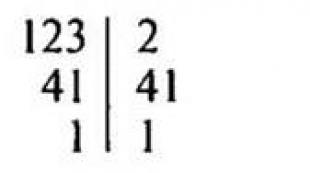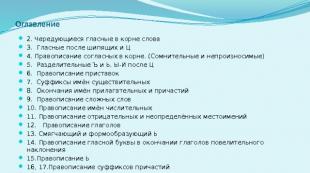Swastika in the symbolism of the Red Army. Swastika on Soviet paper money. Addition explained the order
Award badge of the South-Eastern Front, 1918-1920.
The myth of the swastikophiles is the assertion that the swastika was supposedly the heraldic symbol of the RSFSR, which was used almost until the 30s. As evidence, we are given a photo of sleeve insignia and emblems of the Red Army with swastikas and two banknotes, where swastikas are woven into the pattern.
Indeed, sleeve patches and award badges for commanders with swastikas existed on the South-Eastern Front. But let's take a closer look in connection with what the swastika appeared on this front. The southeastern front fought in the south against Denikin, and in addition to the Russian regiments, Kalmyk units fought on both sides of the front. On March 20, 1919, a division was formed from the Kalmyk units in the 11th Army of the Southeastern Front. In this regard, in November 1919, the front commander V. I. Shorin signed decree No. 213 on the introduction of an identification mark in the form of a swastika for the Kalmyk units. 
The order read:
"Order to the troops of the South-Eastern Front No. 213
The distinctive sleeve insignia of the Kalmyk formations is approved, according to the attached drawing and description.
To assign the right to wear to all commanding staff and Red Army soldiers of existing and formed Kalmyk units, in accordance with the instructions of the order of the Revolutionary Military Council of the Republic p. for No. 116.
Front Commander Shorin
Member of the Revolutionary Military Council Trifonov
Wreed. Chief of Staff of the General Staff Pugachev"
APPENDIX explained the order:
Appendix to the order to the troops of the South-Eastern Front p. city №213
Description
Rhombus measuring 15 x 11 centimeters made of red cloth. In the upper corner there is a five-pointed star, in the center there is a wreath, in the middle of which is “lyungtn” with the inscription “R. S. F. S. R.” The diameter of the star is 15 mm, the diameter of the wreath is 6 cm, the size of the "lyungtn" is 27 mm, the letter is 6 mm.
The sign for the command and administrative staff is embroidered in gold and silver, and for the Red Army soldiers it is screen-printed.
The star, "lyungtn" and the ribbon of the wreath are embroidered with gold (for the Red Army - with yellow paint), the wreath itself and the inscription - with silver (for the Red Army - with white paint).

1000 rubles of the Provisional Government.
The swastika in the order is called "lyungnt" - this is clearly not a Slavic name - Kalmyks have such a rank of monk as Gelung. And most importantly, it was introduced exclusively for the Kalmyks, the Mongolian people who profess Buddhism and for whom the swastika is a common symbol. Thus, the swastika of the Southwestern Front has nothing to do with Russia, nor with the Slavs, nor with the Russian people. The swastika was adopted for the Kalmyk national units and existed in this capacity until 1920.
With swastikas on banknotes, it's even easier. These swastikas went to the Soviet republic from the tsarist regime. In 1916, a monetary reform was planned and new clichés of banknotes with swastikas were prepared, but the revolution prevented this. Then, in 1917, the provisional government used swastika clichés for banknotes of 250 and 1000 rubles. The Bolsheviks, after the capture, had to use the royal cliches for banknotes of 5,000 and 10,000 rubles out of sheer necessity. 
Soviet banknote of 10,000 rubles.
These banknotes went until 1922, after which they were withdrawn.
As you can see, this myth of the swastikophiles turned out to be false. The swastika was not a heraldic symbol of Soviet power. In the case of the use of the swastika in the Red Army, it was a sign for the Kalmyk units. In the case of swastikas on Soviet banknotes, there are only two such banknotes, and they were inherited by the RSFSR from the tsarist government. None of these swastikas is a Russian national sign and quickly disappeared after the appearance of the first fascist organizations in Germany. For the first time, the swastika was lit up among the thugs of the Kapp putsch in Germany in 1920. Since then, the swastika has become the personification of reactionary forces and therefore could not be a symbol of Soviet power. Eat tomatoes.
Here is such a small but accurate explanation for the Gelungs and Rodnovers-fools.

Swastika on the car of Nicholas II
The next myth about the swastika speaks of the connections between the swastika and the royal family. I don't understand - what do the swastikophiles want to prove with these facts?
In fact, these facts do not prove anything, except for the popularity of the swastika in the early twentieth century. and this is due not to some ancient Slavic swastikas, but to the enthusiasm of European elites for mysticism. The set of "royal" swastikas is surprisingly poor: a swastika on the car of Nicholas II, a swastika on the diary of the Empress, and swastikas from the Ipatiev House. That's actually all. What these swastikas prove, apart from the personal hobbies of the royal family, is absolutely not clear.
http://historicaldis.ru/url?e=simple_click&blog_po...A%2F%2Fcont.ws%2Fpost%2F478840
01/04/2017 at 10:46 
| Headings: | |
cited
Liked: 3 users
Reply With quote To quote pad
THIS IS NOT AN IDEAL, AS THE RODNOVERS SAY. BY THE WAY: RODNOVERIE IS CONSIDERED SECTANCY. And it has nothing to do with communism. So comparing and equating the USSR with the Reich is purely to provoke a gay-wai. Hey!
Reply With quote To quote pad
Yesterday's arrangement brought an indescribable feeling of Unity.
Already in my second arrangement, archetypes and sacred symbols are shown.
The swastika symbol - as a manifestation of my attitude to the Great Patriotic War (war is the price of life) and the Indian sacred meaning of the swastika symbol - managed to be combined.
The symbol of the swastika manifested itself in the way the 4 figures of the deputies stood.
The sacred meaning of the constellation shone through for me through the usual phrases and words of the deputies. And I didn't need words!
This symbol has many meanings - not only the sun, but also samsara, the wheel of reincarnations. Four rays symbolize the four elements, as well as four segments of a person's life. The first one is growth and learning. The second is marriage and raising children. The third is the education of youth. The fourth is the service of God.
The swastika also suggests the idea of movement in two directions: clockwise and
counterclock-wise. Like "Yin" and "Yang", the dual sign: rotating on
hourly symbolizes masculine energy, counterclockwise - feminine.
In addition, the swastika has the meaning of royal power.
Recently, this symbol has been fully associated with Ganesha and Lakshmi.
The swastika symbolizes all gods and goddesses, and that all gods have one
source - in this case, a symbol is added to the line of intersection of the lines (cross)
Ohm.
Swastika (Skt. Svasti, greeting, good luck) - a cross with curved ends ("rotating"), directed either clockwise or counterclockwise. The swastika is one of the most ancient and widespread graphic symbols. For most ancient peoples, it was a symbol of the movement of life, the Sun, light, prosperity.
The swastika reflects a rotational movement with its derivative - translational and is able to symbolize philosophical categories.
The word "swastika" is a composite of two Sanskrit roots: su, "good, good" and asti, "life, existence", that is, "well-being" or "well-being".
The swastika is considered not only as a solar symbol, but also as a symbol of the fertility of the earth. This is one of the ancient and archaic solar signs - an indicator of the apparent movement of the Sun around the Earth and the division of the year into four parts - four seasons. The sign fixes two solstices: summer and winter - and the annual movement of the Sun. It has the idea of four cardinal points. A symbolic cruciform sign, consisting, as it were, of four letters Г of the Greek alphabet, interconnected by their bases or four human legs emanating from one common center.
The swastika in India has traditionally been seen as a solar sign - a symbol of life, light, generosity and abundance.
In the form of a swastika, a wooden tool was made to produce the sacred fire. They laid him flat on the ground; the recess in the middle served for the rod, which was rotated until the appearance of fire, kindled on the altar of the deity.
Also a symbol of esoteric Buddhism. In this aspect, it is called the "Seal of the Heart" and, according to legend, was imprinted on the heart of the Buddha.
According to one theory, a special type of swastika, symbolizing the rising Sun, the victory of Light over Darkness, Eternal life over death, was called Kolovrat (Old Slavonic form, lit. "wheel rotation"; Old Russian form - kolovorot, which had the meaning "spindle"). In general, many more examples can be cited that inextricably link the swastika and Russia.
In the good old days, Russian people got married and got married under a swastika.
The swastika, the sleeve insignia of the Kalmyk formations, is denoted by the word "lyungtn", that is, the Buddhist "Lungta", meaning - "whirlwind", "vital energy".
In pre-Buddhist ancient Indian and some other cultures, the swastika is usually interpreted as a sign of auspicious destinies, a symbol of the sun. This symbol is still widely used in India and South Korea, and most weddings, holidays and festivities cannot do without it.
The Buddhist symbol of perfection (also known as manji, “whirlwind” (Japanese, “ornament, cross, swastika”), is considered to be twisted counterclockwise. The vertical line indicates the relationship of heaven and earth, and the horizontal line indicates the relationship of yin-yang. Orientation short dashes to the left personifies movement, gentleness, love, compassion, and their aspiration to the right is associated with constancy, firmness, intelligence and strength.Thus, any one-sidedness is a violation of world harmony and cannot lead to universal happiness.Love and compassion without strength and firmness helpless, and strength and reason without mercy and love lead to the multiplication of evil.
In Buddhism, the swastika is also one of the sacred symbols - the sacred knowledge and teachings of the Buddha and His heart.
Later it became a symbol of the German Nazis, after they came to power - the state symbol of Germany (depicted on the coat of arms and flag).
In the view of Hitler himself, she symbolized "the struggle for the triumph of the Aryan race." This choice combined both the mystical occult meaning of the swastika and the idea of the swastika as an "Aryan" symbol (due to its prevalence in India).
However, strictly speaking, not any swastika was a Nazi symbol, but a four-pointed one, with the ends pointing to the right side and rotated by 45 °. At the same time, it should be in a white circle, which in turn is depicted on a red rectangle.
It was this sign that was on the state banner of National Socialist Germany from 1933 to 1945.
Hitler started the war on the summer solstice.
In Hinduism, there are two ways to depict the swastika - left-handed and right-handed. Both of these symbols are two forms of brahman, which symbolizes the development of the universe (pravriti) from brahman - clockwise and the folding of the universe (nivriti) into brahman - counterclockwise.
It also matters as manifestations of brahman or God in the four cardinal directions - north, south, east, west.
Award badge of the South-Eastern Front, 1918-1920.
The myth of the swastikophiles is the assertion that the swastika was supposedly the heraldic symbol of the RSFSR, which was used almost until the 30s. As evidence, we are given a photo of sleeve insignia and emblems of the Red Army with swastikas and two banknotes, where swastikas are woven into the pattern.
Indeed, sleeve patches and award badges for commanders with swastikas existed on the South-Eastern Front. But let's take a closer look in connection with what the swastika appeared on this front. The southeastern front fought in the south against Denikin, and in addition to the Russian regiments, Kalmyk units fought on both sides of the front. On March 20, 1919, a division was formed from the Kalmyk units in the 11th Army of the Southeastern Front. In this regard, in November 1919, the front commander V. I. Shorin signed decree No. 213 on the introduction of an identification mark in the form of a swastika for the Kalmyk units.

The order read:
"Order to the troops of the South-Eastern Front No. 213
The distinctive sleeve insignia of the Kalmyk formations is approved, according to the attached drawing and description.
To assign the right to wear to all commanding staff and Red Army soldiers of existing and formed Kalmyk units, in accordance with the instructions of the order of the Revolutionary Military Council of the Republic p. for No. 116.
Front Commander Shorin
Member of the Revolutionary Military Council Trifonov
Wreed. Chief of Staff of the General Staff Pugachev"
APPENDIX explained the order:
Appendix to the order to the troops of the South-Eastern Front p. city №213
Description
Rhombus measuring 15 x 11 centimeters made of red cloth. In the upper corner is a five-pointed star, in the center is a wreath, in the middle of which is “lyungtn” with the inscription “R. S. F. S. R.” The diameter of the star is 15 mm, the diameter of the wreath is 6 cm, the “Lungtn” size is 27 mm, the letter is 6 mm.
The sign for the command and administrative staff is embroidered in gold and silver, and for the Red Army soldiers it is screen-printed.
The star, "lyungtn" and the ribbon of the wreath are embroidered with gold (for the Red Army - with yellow paint), the wreath itself and the inscription - with silver (for the Red Army - with white paint).
The swastika in the order is called "lyungnt" - this is clearly not a Slavic name - Kalmyks have such a rank of monk as Gelung. And most importantly, it was introduced exclusively for the Kalmyks, the Mongolian people who profess Buddhism and for whom the swastika is a common symbol. Thus, the swastika of the Southwestern Front has nothing to do with Russia, nor with the Slavs, nor with the Russian people. The swastika was adopted for the Kalmyk national units and existed in this capacity until 1920.
With swastikas on banknotes, it's even easier. These swastikas went to the Soviet republic from the tsarist regime. In 1916, a monetary reform was planned and new clichés of banknotes with swastikas were prepared, but the revolution prevented this. Then, in 1917, the provisional government used swastika clichés for banknotes of 250 and 1000 rubles. The Bolsheviks, after the capture, had to use the royal cliches for banknotes of 5,000 and 10,000 rubles out of sheer necessity.
As you can see, this myth of the swastikophiles turned out to be false. The swastika was not a heraldic symbol of Soviet power. In the case of the use of the swastika in the Red Army, it was a sign for the Kalmyk units. In the case of swastikas on Soviet banknotes, there are only two such banknotes, and they were inherited by the RSFSR from the tsarist government. None of these swastikas is a Russian national sign and quickly disappeared after the appearance of the first fascist organizations in Germany. For the first time, the swastika was lit up among the thugs of the Kapp putsch in Germany in 1920. Since then, the swastika has become the personification of reactionary forces and therefore could not be a symbol of Soviet power.
The symbol of the left-sided (cathedral) swastika was considered in the highest circles of Russian society as an auspicious and protective sign, it was especially revered by the royal family. The swastika sign in a circle was on the hood of the Delaunay-Belleville 45 CV car of Emperor Nicholas II. The same image, along with mysterious letters, was inscribed by Empress Alexandra Feodorovna on the basement wall in the Ipatiev house in Yekaterinburg on the eve of the execution. The image and the inscription were destroyed, but photographed first. Subsequently, this photograph came to General Alexander Kutepov, the leader of the white movement in exile.
According to researchers, Nicholas II and his wife learned about the meaning of the swastika from Grigory Rasputin, and he, in turn, was associated with a certain doctor Bagmaev, a Buryat and a follower of the Tibetan Bon religion. After the coup, this man disappeared without a trace: perhaps he was destroyed by the Bolsheviks, or perhaps he moved to Germany, where a similar character has been featured in Hitler's entourage since the 1920s.
It is known that the first Soviet paper money had images of the swastika. It is explained simply. Literally on the eve of the coup, in 1916, the Tsarist Mint made new clichés for printing banknotes, and these images were present on the cliche. Having come to power, the Bolsheviks did not have time to develop their own design of banknotes and took advantage of those clichés that already existed. The swastika was on the first Soviet money in denominations of 250, 1000, 5000 and 1000 rubles. Thus, this symbol on the first Soviet banknotes was inherited from the previous government.
Award badge of the South-Eastern Front, 1918-1920.
The myth of the swastikophiles is the assertion that the swastika was supposedly the heraldic symbol of the RSFSR, which was used almost until the 30s. As evidence, we are given a photo of sleeve insignia and emblems of the Red Army with swastikas and two banknotes, where swastikas are woven into the pattern.
Indeed, sleeve patches and award badges for commanders with swastikas existed on the South-Eastern Front. But let's take a closer look in connection with what the swastika appeared on this front. The southeastern front fought in the south against Denikin, and in addition to the Russian regiments, Kalmyk units fought on both sides of the front. On March 20, 1919, a division was formed from the Kalmyk units in the 11th Army of the Southeastern Front. In this regard, in November 1919, the front commander V. I. Shorin signed decree No. 213 on the introduction of an identification mark in the form of a swastika for the Kalmyk units.

The order read:
"Order to the troops of the South-Eastern Front No. 213
The distinctive sleeve insignia of the Kalmyk formations is approved, according to the attached drawing and description.
To assign the right to wear to all commanding staff and Red Army soldiers of existing and formed Kalmyk units, in accordance with the instructions of the order of the Revolutionary Military Council of the Republic p. for No. 116.
Front Commander Shorin
Member of the Revolutionary Military Council Trifonov
Wreed. Chief of Staff of the General Staff Pugachev"
APPENDIX explained the order:
Appendix to the order to the troops of the South-Eastern Front p. city №213
Description
Rhombus measuring 15 x 11 centimeters made of red cloth. In the upper corner there is a five-pointed star, in the center there is a wreath, in the middle of which is “lyungtn” with the inscription “R. S. F. S. R.” The diameter of the star is 15 mm, the diameter of the wreath is 6 cm, the size of the "lyungtn" is 27 mm, the letter is 6 mm.
The sign for the command and administrative staff is embroidered in gold and silver, and for the Red Army soldiers it is screen-printed.
The star, "lyungtn" and the ribbon of the wreath are embroidered with gold (for the Red Army - with yellow paint), the wreath itself and the inscription - with silver (for the Red Army - with white paint).
The swastika in the order is called "lyungnt" - this is clearly not a Slavic name - Kalmyks have such a rank of monk as Gelung. And most importantly, it was introduced exclusively for the Kalmyks, the Mongolian people who profess Buddhism and for whom the swastika is a common symbol. Thus, the swastika of the Southwestern Front has nothing to do with Russia, nor with the Slavs, nor with the Russian people. The swastika was adopted for the Kalmyk national units and existed in this capacity until 1920.
With swastikas on banknotes, it's even easier. These swastikas went to the Soviet republic from the tsarist regime. In 1916, a monetary reform was planned and new clichés of banknotes with swastikas were prepared, but the revolution prevented this. Then, in 1917, the provisional government used swastika clichés for banknotes of 250 and 1000 rubles. The Bolsheviks, after the capture, had to use the royal cliches for banknotes of 5,000 and 10,000 rubles out of sheer necessity.

As you can see, this myth of the swastikophiles turned out to be false. The swastika was not a heraldic symbol of Soviet power. In the case of the use of the swastika in the Red Army, it was a sign for the Kalmyk units. In the case of swastikas on Soviet banknotes, there are only two such banknotes, and they were inherited by the RSFSR from the tsarist government. None of these swastikas is a Russian national sign and quickly disappeared after the appearance of the first fascist organizations in Germany. For the first time, the swastika was lit up among the thugs of the Kapp putsch in Germany in 1920. Since then, the swastika has become the personification of reactionary forces and therefore could not be a symbol of Soviet power.
/1/- Today in Tibet./2/- Microdistrict "swastika"./3/- Swastika onancient temple in Japan.
San Diego, California (USA), Epoch Times (RF).
borders with Mexico (South America).
/mer ex-artist Schwarzenegger/ (photo from space, 2006)
Photo (1) Modern Tibet. Sergei Forostovsky from the website of the well-known international newspaper "The Great Epoch" (RF).
Briefly, in the absence of Communist Party censorship, let's touch on this unpopular topic in order to figure out what it means, the swastika. So, briefly about the meaning of the swastika and its historical roots ...
-Hakenkreutz-SWASTIKA -the Sanskrit name of the symbolic sign depicting a hook cross (among the ancient Greeks, this sign, which became known to them from the peoples of Asia Minor, was called “tetraskele” - “four-legged”, “spider”). This sign was associated with the cult of the Sun among many peoples and is found already in the Upper Paleolithic era and even more often in the Neolithic era, primarily in Asia (according to other sources, the oldest image of the swastika was found in Transylvania, it dates from the Late Stone Age; the swastika found in the ruins of the legendary Troy, this is the Bronze Age). Already from the 7th-6th centuries BC. e. it is included in Buddhist symbolism, where it means the secret doctrine of the Buddha. The swastika is reproduced on the oldest coins of India and Iran (before our era it penetrates from there to China); in Central America it is also known among the Mayan peoples as a sign indicating the cycle of the Sun. Dictionary of International Symbols and Emblems Pokhlebkin V.V., International relations, 1994
So, the swastika as a graphic image can be found in any ancient cult around the world - in Britain, Ireland, in the vastness of modern Ukraine and Russia, Mycenae, Gascony, among the Etruscans, Hindus, Celts and Germans, in Central Asia and pre-Columbian America. She was associated with Russian-Vedic (Perun, Svarog, Semargl) and Hindu gods (Agni, Shiva, Vishnu), ancient Greek deities (Zeus, Helios, Athena), with Nordic gods - the hammer of the thunder god Thor was sometimes depicted as a swastika. The symbol of solar energy in Babylon and Egypt is also the swastika. It is impossible to embrace all the interpretations of this sign. Let us dwell only on the most significant ones.
- "The problem with this damn swastika is that it's an overly ambiguous symbol..." notes Anthony Burgeos, ("Power of the Earth"). Take a look at some examples of different swastikas (there are many):
The swastika in ancient times symbolized good luck; the word itself comes from the Sanskrit word for "prosperity". This cross, rotated both clockwise and counter-clockwise, can be found on Navajo tablecloths, on Greek pottery, Cretan coins, Roman mosaics, objects excavated during the excavations of Troy, on the walls of Hindu temples, and in many other cultures of different times. . Often it is a symbol of the solar passage through the heavens, turning night into day - hence the broader meaning as a symbol of fertility and the rebirth of life; the ends of the cross are interpreted as symbols of wind, rain, fire and lightning.
In heraldry, the swastika is known as the crampone cross, from crampon, "iron hook". Of course, there were exceptions to the positive image of the swastika - the most famous was the German Hakenkreuz or "hooked cross", which the Nazi Party adopted as a symbol in 1919. And in the east, the swastika can cause negative associations. In India, for example, the counterclockwise shape, sometimes called sauvastika, can mean night and black magic, as well as the god Kali, the "black god" who brings death and destruction.
By the way, the version of the swastika, as an identification mark of the Red Army, was considered at one time by the government of young Soviet Russia. But then it was chosen, initially a diabolical sign - a star.
Swastika in the Red Army (RSFSR) Cavalry, Southwestern Front 1919-20:



Swastika on the coat of arms of Russia (on the money of the Provisional Government of 1917 and
seal of the Moscow Provincial Council of People's Deputies in 1919. It is interesting that blue swastikas were often sewn on the red stars of Budyonovka ...
Note According to V.O. Daines, in the Central State Archive of the Soviet Army there is an appendix to the order to the troops of the South-Eastern Front No. 213 for 1918, which describes a new emblem for personnel: "Rhombus 15x11 centimeters from red cloth. In the upper corner there is a five-pointed star, in the center - a wreath , in the middle of which is "LYUNGTN" with the inscription "R.S.F.S.R." The diameter of the star is 15 mm, the wreath is 6 cm, the size of "LYUNGTN" is 27 mm, the letters are 6 mm. Badge for command and administrative staff embroidered in gold and silver and stenciled for the Red Army. The star, "LYUNGTN" and the ribbon of the wreath are embroidered in gold (for the Red Army with yellow paint), the wreath itself and the inscription - with silver (for the Red Army - with white paint)."
Source http://www.ostfront.ru/Soldatenheim/Swastika.html
In Soviet Russia sleeve patches fighters of the Red Army of the South-Eastern Front since 1918 were decorated with a swastika with the abbreviation of the RSFSR inside. The swastika also appears on the new banknotes of the Provisional Government, and after October 1917 - on the banknotes of the Bolsheviks of the Communist Party. In 1917, the Provisional Government put into circulation new banknotes in denominations of 1000, 5000 and 10000 rubles, which depict not one swastika, but three: two smaller ones in side ties and a large swastika in the middle. Money with a swastika was in use until 1922, and only after the formation of the Soviet Union were withdrawn from circulation.
Swastika in Russia http://www.algiz-rune.com/swrus.htm#null
The 20th century is a time of curiosities. This applies to a large extent to the swastika. Take a look, for example, at a photograph of a forest near Berlin. The trees are planted in such a way that in autumn and spring, a glance sliding from above along the crowns of trees comes across something painfully familiar. This afforestation is the work of a fanatical Hitler follower in the 1930s. True, these trees have already been cut down ...



Swastikas were also on Russian money (enlarged).
see Swastika historical roots http://www.uganska.net/news/articles/1243/print/
Swastika - or marrying , /ukr. -happiness /, translated from Russian and Ukrainian, which also has Aryan roots, according to the famous Ukrainian archaeologist and historian prof. and academician 3 academies, incl. and New York, Mr. Shilova Yu.A. and others - means HAPPINESS!
The swastika appeared a long time ago and has been related to fascism only since the 20th century. Therefore, it is quite common in India, Tibet and other countries of the world, the image of a swastika in a mosaic of gilded smalt of the 11th century can be found even in the center of the capital of Ukraine - Kiev, in the famous St. Sophia Cathedral, founded by the Great Kyiv Prince from the Rurik dynasty, Yaroslav the Wise. According to one of the legends, the Germans did not blow up this cathedral, now protected by UNESCO, because they saw the image of a swastika on its walls ... (see the article by Paukov S.M. “Secrets of the Library of Yaroslav the Wise”, posted on the website http://www.epochtimes.ru/content/view/4425/34/ and etc.).
Thus, according to experts, the ancient symbol of the swastika has been used for thousands of years, in virtually every culture, as a symbol of good luck, protection, symbolizing life and the change of seasons.
And further - The flag of the Finnish Air Force has long had a swastika. she, in turn, got them from the Swedes with the first ... aircraft.
According to an explanation on the website of the Finnish Defense Forces, the swastika, as an ancient symbol of happiness for the Finno-Ugric peoples, was adopted as a symbol of the Finnish Air Force as early as 1918. Although under the terms of the peace treaty after the end of the Continuation War in 1945, the Finns had to abandon its use, but this was not done. The appearance of the current flag was established by a decree of President U.K. Kekkonen dated November 8, 1957. The explanation on the website of the defense forces emphasizes that, unlike the Nazi, the Finnish swastika is strictly vertical.
ALSO SEE
The image of the swastika was present on banknotes, both in tsarist Russia and under the Bolsheviks until 1923.
http://www.ostfront.ru/Swastika/Rubl.jpg
http://www.rne.org/images/rubl3.jpg
The sleeve patches of the Red Army had an image of a swastika with the abbreviation of the RSFSR, officers and soldiers of the Red Army of the South-Eastern Front wore it from 1918. http://www.ostfront.ru/Swastika/Cav.jpg

 -with a swastika.
-with a swastika.
- the ceremony of presenting the flag with a swastika to the Air Force Flight School by President Tarja Halonen
Scientist Chirag Badlanireasonably believes thatThe swastika symbolizes much more than the Nazis intended. The swastika has existed as a symbol of kindness and happiness for thousands of years long before the advent of Nazism. This symbol is very important for many cultures, it represents their history and their faith. The Nazis, by appropriating the swastika, nullified the importance of this ancient symbol. Today, the swastika for most people is associated with evil, death and destruction. It is very sad to see that the swastika has turned from a symbol of life and joy into a symbol of evil. This is something that the ancients could not have imagined.”
Sourcehttp://falun.city.tomsk.net/emblem.htm
Some scholars argue that the swastika was a symbol of many gods: Zeus, Helios, Hera, Artemis, Thor, Agni, Brahma, Vishnu, Shiva and many others.
In the Masonic tradition, the swastika is a symbol supposedly warding off evil and misfortune.
| Third Reich |
|
Note: Third Reich (GermanDrittes Reich- "Third Empire") - unofficial name German Empire from March 24, 1933 to May 23, 1945. Some historians mistakenly consider the day of Germany's surrender on May 8 the day the Third Reich fell. It officially ceased to exist only on May 23 after the arrest of Karl Dönitz's government. The names are also used Nazi Germany, Thousand Year Reich. The Third Reich came to replace - one of the awards of the Third Reich.
In the twentieth century, the swastika acquired a new meaning, the swastika or Hakenkreuz ("hooked cross") became a symbol of Nazism. Since August 1920, the swastika began to be used on Nazi banners, cockades, and armbands. In 1945, all forms of the swastika were banned by the Allied occupation authorities.
http://lan.obninsk.ru/forum/index.php?act=Print&client=printer&f=18&t=129 AND ETC.
Based on media materials and from the draft of a new book by the writer Sergei Paukov from Kyiv "Honeymoon" by Adolf Hitler in 1945
PAUKOV S.M.independent researcher, writerMy address: Paukov Sergey Makarovich PO box-210,
mountains Kyiv, Ukraine Kyiv-206, 02206 , Ukraine. E-mail: )
S. M. PAUKOV, independentexplorer, writerKiev, Ukraine Eng My address: Sergey PAUKOV,P/OBox210,
Kyiv, Ukraine02206. e-mail: This e-mail address is being protected from spambots. You need JavaScript enabled to view it









